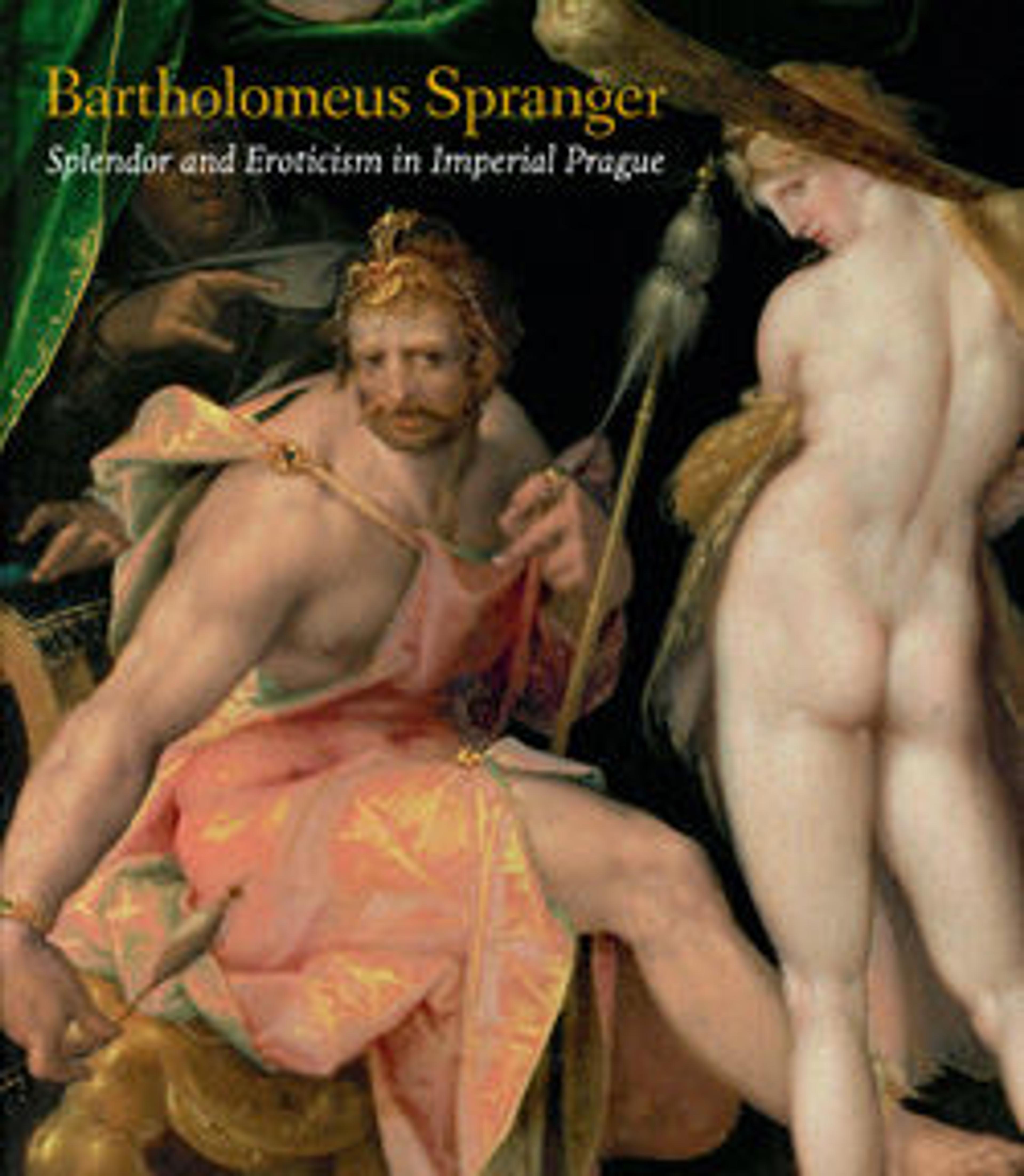Neptune and Caenis
Ovid (Metamorphoses, XII, 195–209) relates Neptune's rape of the maiden Caenis while she walked along the Thessalian shore. The god, sated, promised to grant her any favor in return. Anxious to avoid further attacks of the sort, Caenis asked to become a man. Duly transformed, Caenis took on the masuline name Caeneus. Representations of the subject are rare, but, much like the story of Hercules and Omphale, Ovid's tale of androgyny was certain to be relished by the Late Mannerists: It challenged them to capture the moment of transformation, for, even as she named her wish, says Ovid, Caenis's voice took on deeper male tones. In the bronze there is, accordingly, a certain masculinization of the female form.
The composition is derived from an engraving, dated 1580, by Johann Sadeler the Elder, based in turn on a drawing by Bartholomaeus Spranger in the Museum Plantin-Moretus, Antwerp. The crisscrossing forms realized in the bronze were a quintessential feature of Spranger's brand of Mannerism. Born in Antwerp in 1546, Spranger traveled widely in Italy and worked for Maximilian II and Rudolph II in Vienna and in Prague, where he died in 1611. A later cast of this bronze, in which the figure of Caenis is more modestly draped and the rhythms of the waves are more repetitious, has been attributed to Hans Mont, a sculptor from Ghent who is known to have collaborated with both Giovanni Bologna and Spranger, but Mont's actual style is an unknown quantity.
The composition is derived from an engraving, dated 1580, by Johann Sadeler the Elder, based in turn on a drawing by Bartholomaeus Spranger in the Museum Plantin-Moretus, Antwerp. The crisscrossing forms realized in the bronze were a quintessential feature of Spranger's brand of Mannerism. Born in Antwerp in 1546, Spranger traveled widely in Italy and worked for Maximilian II and Rudolph II in Vienna and in Prague, where he died in 1611. A later cast of this bronze, in which the figure of Caenis is more modestly draped and the rhythms of the waves are more repetitious, has been attributed to Hans Mont, a sculptor from Ghent who is known to have collaborated with both Giovanni Bologna and Spranger, but Mont's actual style is an unknown quantity.
Artwork Details
- Title: Neptune and Caenis
- Artist: Based on an engraving by Johann Sadeler I (Netherlandish, Brussels 1550–1600/1601 Venice)
- Artist: After a drawing by Bartholomeus Spranger (Netherlandish, Antwerp 1546–1611 Prague)
- Date: late 16th–early 17th century
- Culture: probably Netherlandish
- Medium: Bronze, with dark brown lacquer patina
- Dimensions: Height: 12 1/2 in. (31.8 cm)
- Classification: Sculpture-Bronze
- Credit Line: The Jack and Belle Linsky Collection, 1982
- Object Number: 1982.60.127
- Curatorial Department: European Sculpture and Decorative Arts
More Artwork
Research Resources
The Met provides unparalleled resources for research and welcomes an international community of students and scholars. The Met's Open Access API is where creators and researchers can connect to the The Met collection. Open Access data and public domain images are available for unrestricted commercial and noncommercial use without permission or fee.
To request images under copyright and other restrictions, please use this Image Request form.
Feedback
We continue to research and examine historical and cultural context for objects in The Met collection. If you have comments or questions about this object record, please complete and submit this form. The Museum looks forward to receiving your comments.
